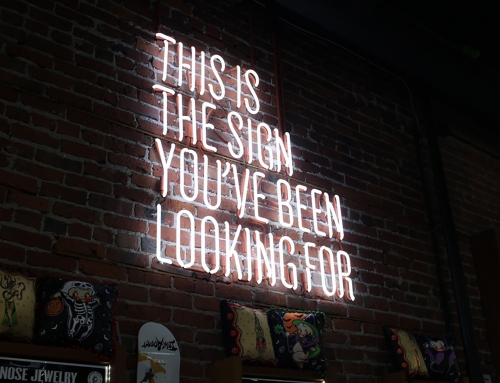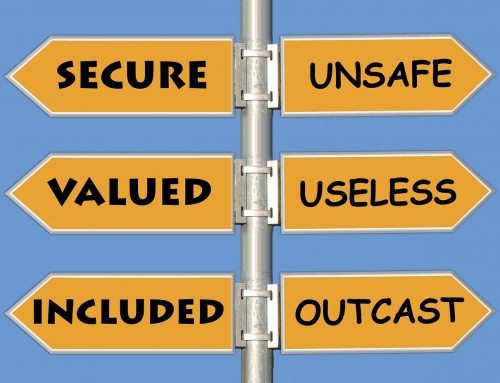Mind the Gap: 8 tips for better communication
If you’ve ever travelled on British trains you will be very familiar with the words “Mind the Gap”. In some stations, the gap between the train and the platform is quite wide and you have to step carefully so that your foot doesn’t slip into the gap. When trains pull into the station, the doors swish open and a deep commanding voice reminds you to MIND THE GAP as you step onto the platform.
On my recent trip to England, those words had a particular resonance. For me they were perfect symbol of the gap in our ability to communicate. How confident are you that your speech is precise and clear and that you are heard and understood? Are you confident about expressing yourself at work, and if not, how do you communicate your needs. How would you rate your listening skills?
![]()
The reality is that there is always a gap between two people communicating. The speaker is expressing from his or her own reality and the listener is using the framework of their own experiences to understand what is being said to them. Even two people sharing the same values, beliefs and backgrounds will have their own unique way of listening and interpreting what is said to them.
The following tips may help you to improve communication and bridge the gap.
1. Don’t assume.
Experiments have shown that our brains have a wonderful ability to fill in the gaps of any information it believes is missing. You may think you know what they are going to say next, but you may not be right. Listen until the other person has finished speaking. If you assume what the person is saying, you are not fully listening.
2. Listen openly
Most people listen with an ear out for their own name. They also listen defensively waiting to protect themselves from accusation or blame. Stop listening for where you fit into the conversation. Try listening from the position that the other person is talking about their own world, their own concerns and their own values. Listening in this way is a gift, as people feel heard and understood.

3. Emotional vs Intellectual
Work out the type of conversation that you are engaged in.
Some people speak from emotion and some from their intellect. Like oil and water, emotional and intellectual conversations struggle to mix. To MIND THE GAP you have to speak into the type of conversation you are in. If you are involved in an intellectual conversation, speak facts, figures and solutions. Simple rule of thumb is that if someone uses the words ‘ I feel,’ ‘It felt’ or words that describe emotions they usually want an empathetic listener, rather than a solution. To bridge this gap you have to use emotional words in reply for the other person to feel heard and acknowledged. If you want to move the conversation back to an intellectual level, acknowledge the feelings the other person experienced by saying something directly about the emotional experience saying something along the lines of
‘I can see you were deeply affected by this experience,’ then arrange another time to have the intellectual conversation.
4. Be imaginative in your listening
Words are interpreted in different ways, the same word can have different meanings and people use metaphors and sarcasm to convey their wants and needs. So even if you have heard the same complaint a hundred times, it pays to listen imaginatively. Listen to the words and then use your imagination. What do those words look like? Let them float around a bit, then ask questions to make sure you have made the right sense of what is being said to you. Imaginative listening makes listening a lot more fun and creates a whole new level of connection between you and the person who is speaking.

5. Being open is the best form of defense.
If a colleague is attacking you and is openly saying ‘you did’, ‘you said’, ‘you promised’, separate the attack from your defense. Listen to what your colleague has to say, and then refer only to subject within the conversation. If you don’t know what the subject is (as your colleague may not be clear), then ask them clarify what the subject is project/person/numbers and so on. Understanding and gaining clarity about another persons concerns are, bridges the gap and gives the other person the acknowledgement they are seeking.
You might have to defend yourself and set your boundaries at some point, but in the initial conversation, asking for clarification will give yourself the space you need to think and tap into your internal resources.
6. Be honest about what you want.
Ask for what you want in an open way. Your request might be completely ignored or not possible, but asking for what you want is straightforward, lets people know what your values are, what you feel is right and there are fewer opportunities for confusion. Don’t assume that people understand you or that you are good at communication.

7. Step beyond your own gap
If you are aware of your own personal insecurities (not everyone is) then remind yourself that what others say may trigger those fears. It is not the intention of the other person to do this. Reach out beyond your fears to communicate as clearly as you able, knowing that your fears are your own and are not the subject of the conversation.
8. Say what you mean and mean what you say.
Its an oldie but a goody, everyone will understand you if you say what you mean and mean what you say. Treat the person you are speaking to with respect. Don’t fudge, don’t drag a conversation out and don’t try to please or take responsibility for how someone else reacts.

Keeping these tips in mind you will connect powerfully to another person in conversation and ultimately you experience less stress. Speak honestly, listen creatively and you will MIND THE GAP of communication.
Lucille Henry PhD.








Recent Comments